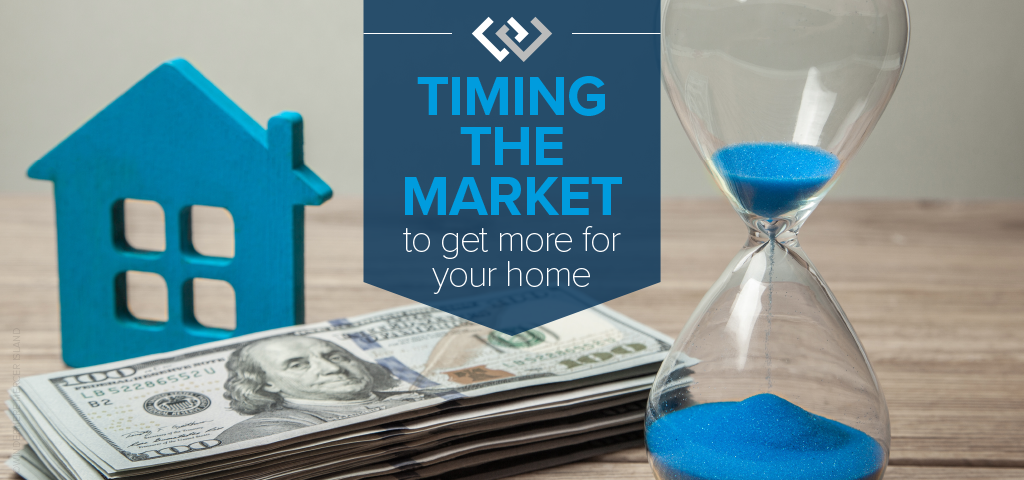The Right Timing Can Bring You Thousands More When You Sell

Ever notice how one home on your street sells well above asking price with a line of buyers out the door and an identical home comes on a month later and sits on the market for two weeks before finally selling at a reduced price? Every. Day. Counts.
It’s not always about the house. It’s also about timing the market well. In a world where potential buyers know how long you’ve been on the market down to the minute, being on the market a nanosecond longer than expected can be painful for any seller, financially and otherwise. Statistically, at mainstream price points, prices seem to peak around Day 7 and begin to slide downhill after Day 10.
How to time the market in a nutshell.
Avoid coming to market during major holiday weeks. Potential buyers take vacation too—and the fewer buyers out there looking in those precious early days, the lower the likelihood you’ll sell in the first 10 days. Look to come on the market a few days after typical vacations are over to allow buyers to re-engage in the search process. Avoid coming to market when a similar house in your neighborhood has just listed and not yet sold.
The laws of supply and demand would dictate that when supply appears abundant, demand diminishes—and the days tick on by. Even if you are by far the better house and at a better price, you might still be hurt by the curiosity around why everyone is selling now.
Avoid coming to market during bad weather or local events. Like coming on market right smack in the middle of graduation week, listing when everyone’s attention is on something other than home shopping is likely to miss the mark big time. Even if you were all set to list on a particular date, it might be better to take a deep breath and wait until the storm passes.
Do come to market when you notice an absence of great listings for sale in your price range and neighborhood. Buyers will likely feel that void too and be chomping at the bit for the next great home to come along. The chances of a perfect match between a solid buyer and a reasonable seller are best in this zone.
This is especially true if your home has challenges (outdated design, deferred maintenance, busy street, steep slope, etc.) that would make it difficult to compete with other homes out there. On the flip side of that coin, if your home is exceptional, you want to be on the market during peak season when buyers can size up your home to the competition and appreciate how much better your home is. Buyers will pay handsomely for turnkey quality when they can clearly see the difference. Come on when there is nothing else to compare to and your beautiful amenities might not see their full value potential.
The best days to come to market are Tuesday, Wednesday or Thursday. This allows for showings and open houses on evenings and throughout the weekend. If you are doing an offer review date, the best day to review offers is Monday or Tuesday. This gives buyers ample time to see your home, conduct their due diligence, complete a home inspection and sewer scope, and get their financial documentation together—all before they prepare an offer.
Final thoughts.
Look at the holiday calendar and local school district calendars to guide you toward best weeks to come to market. Don’t forget to check in big political and sporting event dates too.
Decide whether your home will shine against the competition, or be the wallflower, and adjust your timing based on real-time competition.
Of course, an outstanding listing broker can help you choose the most favorable date to bring your home to market. They analyze the market consistently and know exactly what indicators to look for. Still have questions? Contact one of our knowledgeable brokers for assistance with determining the best market timing for your home.
Find a Home | Sell Your Home | Property Research | Neighborhoods | Market Reports | Our Team
We earn the trust and loyalty of our brokers and clients by doing real estate exceptionally well. The leader in our market, we deliver client-focused service in an authentic, collaborative and transparent manner and with the unmatched knowledge and expertise that comes from decades of experience.
© Copyright 2020 Windermere Mercer Island.

 Facebook
Facebook
 X
X
 Pinterest
Pinterest
 Copy Link
Copy Link

